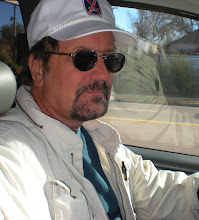Native American who served as 'code talker' during WWII dies at 92
Gilbert Horn, Sr. Facebook
Associated Press
Published: March 30, 2016
Gilbert Horn, Sr. Facebook
Associated Press
Published: March 30, 2016
Army veteran Gilbert Horn, Sr., died March 27, 2016. He was 92.
Chester Nez, one of the original 29 Navajo Code Talkers and who helped developed the code, smiles with his book on Friday, November 8, 2013. Meredith Tibbetts/Stars and stripes
Last original Code Talker laid to rest in Santa Fe National Cemetery
Last original Code Talker laid to rest in Santa Fe National Cemetery
Chester Nez hailed from Western New Mexico, went to World War II in the Pacific and spent his remaining days in Albuquerque. Now the final resting spot for the last of the original Navajo Code Talkers is the Santa Fe National Cemetery, alongside tens of thousands of other military veterans.
In this undated Marine Corps file photo, a platoon of Navajo Code Talkers stand in formation at Camp Elliot, Calif., under the supervision of Staff Sgt. Philip Johnston. The Navajo created the 1st version of their code at Camp Elliot. U.S. Marine Corps
National Navajo Code Talkers Day observed with parade, speeches
In this undated Marine Corps file photo, a platoon of Navajo Code Talkers stand in formation at Camp Elliot, Calif., under the supervision of Staff Sgt. Philip Johnston. The Navajo created the 1st version of their code at Camp Elliot. U.S. Marine Corps
National Navajo Code Talkers Day observed with parade, speeches
The men who served as Navajo Code Talkers during World War II were celebrated for their service and sacrifice on Thursday during this year's National Navajo Code Talkers Day.
Comanche Code Talker honored with new gravestone at Farmington cemetery reflecting service, honors
Comanche Code Talker honored with new gravestone at Farmington cemetery reflecting service, honors
With red shawls draped around their shoulders, sisters Nona Gail Reed and Mona Selph stood with their brother, Wellington "Mike" Mihecoby Jr., and read the inscription on their father's new headstone.
GREAT FALLS, Mont. — Gilbert Horn Sr., a Native American code talker who returned from World War II to spend decades serving the Fort Belknap Assiniboine Tribe as a judge and council member, has died of natural causes. He was 92.
Horn died Sunday at Northern Montana Care Center in Havre, Kirkwood Funeral Home said. His memorial service was scheduled Wednesday.
Horn was born on the Fort Belknap Indian Reservation in 1923. He joined the U.S. National Guard at age 15 as a way to escape the poverty of the reservation. He enlisted in the Army at 17 after the Japanese bombed Pearl Harbor.
Horn was initially trained as a sharpshooter and later received some training in communications and encryption and joined other Indians who used their native languages to send coded messages during World War II. The work of the code talkers remained classified until 1968.
Horn volunteered for service as a member of Merrill's Marauders, a special operations unit of 2,750 men whose mission was to cut Japanese communications and supply lines in the Burmese jungle, the Great Falls Tribune reported.
"It was a fighting unit, ready for action any time," Horn told the Tribune during an interview for a story published in January 2014. "I wanted to go see the war. I didn't want to be in Montana all my life. I wanted to see what's across that big waters called the oceans."
The unit made an 800-mile trek over the Himalaya Mountains into the jungle with only the weapons and supplies they could carry on the 720 mules and horses they brought with them. The Marauders fought through monsoon season. Troops suffered from malaria, dysentery and typhus. Horn was wounded four times.
"There was no support. We didn't have any artillery. They just kept on knocking us down, whittling us down," he said in 2014. "It is hard to believe what we had to go through."
Horn — one of 1,200 soldiers who survived the Marauders' campaign — was awarded a Purple Heart. Each soldier also received a Bronze Star.
Despite his military heroics, when Horn returned to the reservation in June 1945, he said he was "treated like dirt."
Veterans were supposed to be given preferential treatment when applying for certain jobs and qualify for low-interest federal housing loans, but he said that almost never happened.
He worked on his grandparents' farm and received schooling in business management, psychology and legal work.
Horn served on the Assiniboine Treaty Committee for 68 years. He was a member of the Fort Belknap Community Council for 19 years and was a tribal judge for eight years, during which time he wrote the first regulations for the tribe's juvenile court. He was a member of the health board that lobbied for a new clinic and also helped get the Head Start program established on the reservation. One of its buildings was named after Horn, whose Indian name is "Shunk Ta Oba Kni," or "Returns With Prisoner Horse."
In 2013, he received an honorary doctorate in humanitarian services from Montana State University-Northern. In May 2014, he was named the chief of the Fort Belknap Assiniboine Tribe, the first tribal chief in more than 125 years.
Horn is survived by 10 of his 11 children, 37 grandchildren, 71 great-grandchildren and 18 great-great-grandchildren.


No comments:
Post a Comment